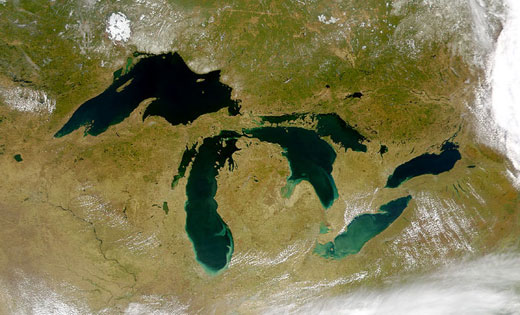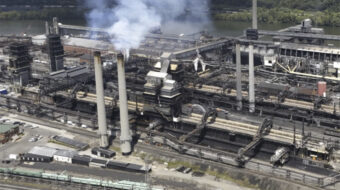
CHICAGO – With a monster heat wave enveloping this city and much of the Midwest for the next week, a lot of residents are heading to Lake Michigan and other Great Lakes beaches to cool off. But a newly released study by the Natural Resources Defense Council suggests swimmers will encounter beaches increasingly fouled by E-coli bacteria, viruses, pollution and other contamination.
The Great Lakes are not alone. In its annual survey of water quality called “Testing the Waters”, the NRDC found “the number of beach closings and advisories in 2010 reached 24,091 because bacteria levels exceeded health and safety standards – the second-highest level since NRDC began tracking these events 21 years ago, confirming that our nation’s beaches continue to suffer from bacterial pollution that puts swimmers at risk.”
The increase in beach closures was 29% higher than the previous year.
During 2010, U.S. Great Lakes beaches had 3,766 days of closings and advisories. Including extended days the total comes to 4,137 beach closing and advisory days. The number of beach closing and advisory days increased 14% from 3,300 in 2009.
The Great Lakes and the entire ecological basin that supports them are an incredibly valuable natural resource. The lakes represent 21% of the world’s and 84% of the U.S.’s fresh water supply. But human activity, including agricultural and industrial pollution and sewage discharge, is threatening them with ecological collapse.
While not all sources of contamination of beaches are known, the NRDC says, “we do know that aging and failing infrastructure throughout the region is probably the most prevalent factor.”
Ringing the lakes are scores of aging industrial cities and towns, many in fiscal and economic crisis, who without adequate resources have been forced to neglect maintaining and upgrading their infrastructures.
A 2006 NRDC study revealed 20 cities dump 25 billion gallons of untreated raw sewage into the Great Lakes each year.
Gary, Indiana, for example, has been devastated by deindustrialization and a huge population loss, and has been in deep crisis for years. In the past three years the city has discharged 6.8 billion gallons of raw and partially treated sewage into waterways flowing directly into Lake Michigan. Chicago area beaches and the Indiana Dunes National Park are all nearby.
It is estimated that a downpour of 1.5 inches on Chicago causes storm water runoff into Lake Michigan and carries with it all sorts of garbage, E-coli, pollution, bacteria and contaminants. This runoff mixes with regular sewage and overwhelms the current systems, causing discharges into the lake, including that of raw sewage.
With increasing extreme weather events, these kinds of discharges are likely to become more frequent.
But there is some good news: the Environmental Protection Agency has begun a major overhaul of the Clean Water Act with the aim of imposing stricter regulations for how urban and suburban water deal with runoff into lakes and waterways.
The American Recovery and Reinvestment Act of 2009 also specifically directed funding to what are called “green infrastructure techniques,” that allow for innovative natural retention and cleansing of storm runoff.
The bad news is it’s not nearly enough.
The NRDC goes on to say, “This vexing issue is not a unique situation in the region and will require significant investment to fix.” Needless to say, such investment would create thousands of jobs.
The Illinois section of the American Society of Civil Engineers says Illinois’s aging wastewater treatment system dumps billions of gallons of untreated sewage into surface waters each year. The EPA estimated in 2009 the US must spend $390 billion over next 20 years to upgrade the nation’s wastewater management systems. Illinois would need to spend $13.5 billion.
An additional $13.4 billion is needed over the next 20 years to upgrade Illinois’s drinking water treatment facilities and bring them up to national standards. It is estimated $20-30 billion is needed yearly to upgrade the nation’s water treatment facilities, but only $3 billion was allocated for the entire country last year. This included $2 billion from the American Recovery and Reinvestment Act.
It is clear the devastating cuts to domestic spending and the obstruction to increase spending on the nation’s vital infrastructure needs by the Republican right wing and tea party zealots in Congress means ongoing and deepening crisis for the nation’s beaches, lakes, rivers, and coastal areas. Without a plan to tax the rich and redirect resources away from wasteful military spending, the quality of life for the American people will continue to decline.
Photo: The Great Lakes represent 21% of the world’s and 84% of the U.S.’s fresh water supply. View of the Great Lakes from space, provided by the SeaWiFS Project, NASA/Goddard Space Flight Center. CC.










